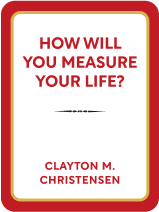

This article is an excerpt from the Shortform book guide to "How Will You Measure Your Life?" by Clayton M. Christensen. Shortform has the world's best summaries and analyses of books you should be reading.
Like this article? Sign up for a free trial here .
Do you want to understand Clayton Christensen’s jobs to be done theory? How can this strategy help you figure out what your customers really want?
Clayton Christensen’s jobs to be done theory can help you to better understand your customers and improve your marketing skills. You can learn about the best ways to market your product with an explanation of Christensen’s popular milkshake marketing tactic.
Find out more about Clayton Christensen’s jobs to be done theory below.
Clayton Christensen and the Jobs to Be Done Theory
Products often fail because companies develop them based on what they want to sell rather than on what customers need.
In his book The Innovator’s Dilemma, Christensen introduced a new theory of marketing and product development: determining the “job to be done.” Clayton Christensen’s jobs to be done theory states that when people buy a product or service, they’re in effect hiring it to do a job for them. Products designed to do jobs customers want done are most successful.
(Shortform note: For more on the jobs-to-be-done theory, read our summary of The Innovator’s Dilemma here.)
Marketing efforts often focus on targeting products to demographic segments, but we don’t buy things because of our demographics, although demographics may correlate with some buying decisions. What happens is that a job or need comes up, and we look for a way to address it. If there’s a product out there that can do the job, we buy it. If not, we find a way to make do. What causes us to buy is having a job and determining that a product will help us get it done.
You can use Clayton Christensen’s jobs to be done strategy to dramatically improve sales. Below are some examples of companies or products that succeeded by figuring out what jobs customers needed to have done and doing them well.
Milkshake Marketing
Clayton Christensen’s milkshake marketing example can help you to understand his jobs to be done theory. In this example, Christensen shows that it’s crucial to understand what your customers really want.
A fast-food chain that wanted to sell more milkshakes identified the job its customers were buying milkshakes to do. It turned out that milkshakes served as a convenient, portable, and satisfying breakfast that people could consume on their commute to work without spilling in their car. So the company came up with ways to do this job better—by making its milkshakes more filling (adding chunks of fruit) and convenient (providing a larger straw).
Ikea and Customer Convenience
This example can help you to better understand Clayton Christensen’s jobs to be done theory. Instead of targeting products to a customer segment, the discount furniture seller IKEA structures its stores to do a job customers need to have done: to quickly and conveniently furnish a new home or apartment.
They provide everything customers need in one place—they keep everything in stock and provide a play area for children and a restaurant so customers stay in the store longer. IKEA packages products flat to fit in cars and, for larger items, offers same-day delivery.
A Quick Card Game
A toy company developed 12-minute card games that appealed to parents who wanted a quick game they could play with kids in the evening and wrap up before bedtime. Other available games didn’t do this job for parents because it took too long to finish them.
The above examples can show you how Clayton Christensen’s jobs to be done theory can improve your marketing strategy.

———End of Preview———
Like what you just read? Read the rest of the world's best book summary and analysis of Clayton M. Christensen's "How Will You Measure Your Life?" at Shortform .
Here's what you'll find in our full How Will You Measure Your Life? summary :
- How economic theories that help businesses succeed can also help individuals make better life decisions
- How to build a career that makes you happy
- How to deepen your relationships with your spouse and children






